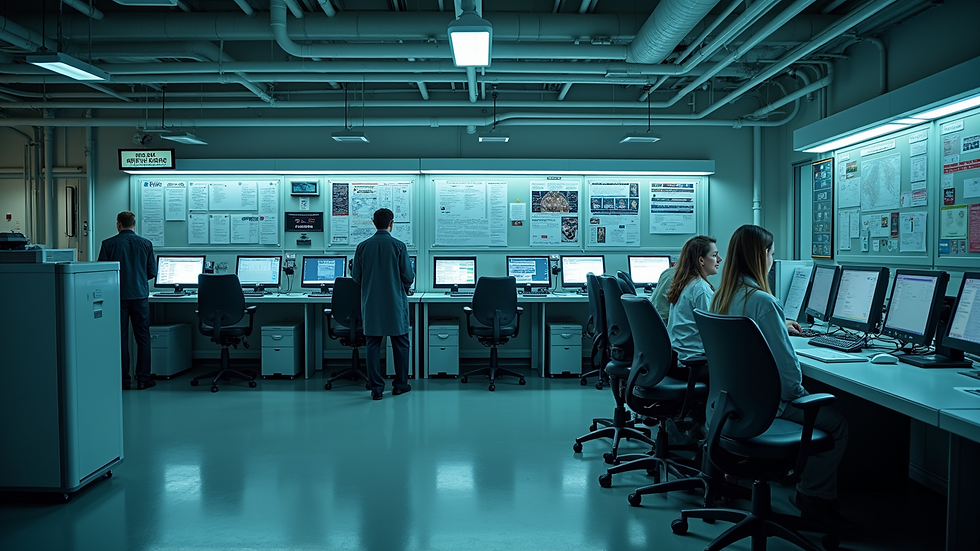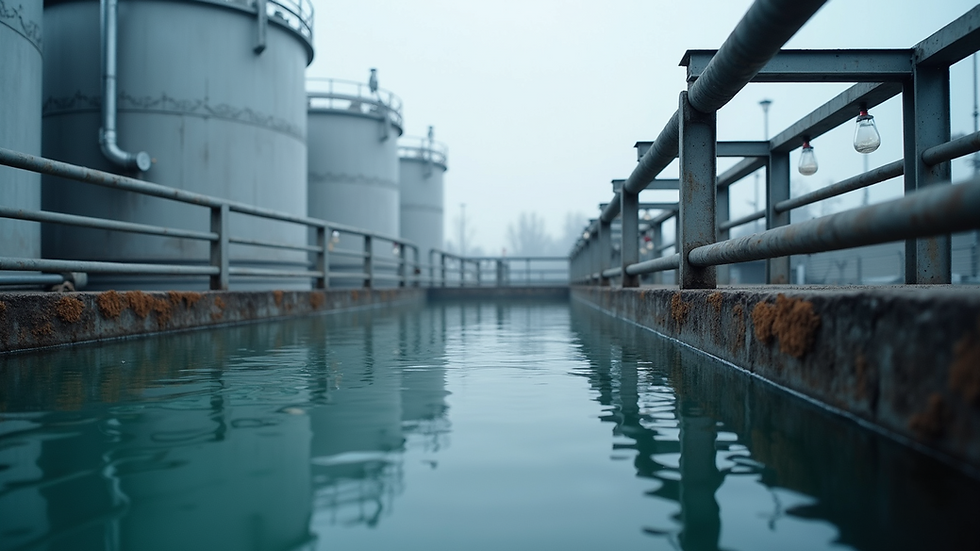Advanced Methods for Efficient Sewage Treatment
- karan9377
- Aug 4
- 4 min read
Sewage treatment is a critical component of urban infrastructure, ensuring that wastewater is safely processed before being released back into the environment. With increasing urbanization and industrial activities, traditional sewage treatment methods often fall short in handling complex pollutants and meeting stringent environmental standards. This has led to the development of modern sewage treatment processes that are more efficient, sustainable, and capable of treating wastewater to higher quality levels.
In this article, we will explore some of the most advanced methods used today to improve sewage treatment efficiency. These methods not only reduce environmental impact but also optimize resource use and energy consumption. Whether you are involved in environmental management, urban planning, or water treatment technology, understanding these processes can help you make informed decisions and implement better wastewater solutions.
Modern Sewage Treatment Processes: An Overview
Modern sewage treatment processes combine physical, chemical, and biological techniques to remove contaminants from wastewater. Unlike conventional methods that primarily focus on basic pollutant removal, these advanced processes target a wider range of pollutants including nutrients, heavy metals, and emerging contaminants such as pharmaceuticals and microplastics.
Some key features of modern sewage treatment processes include:
Enhanced nutrient removal: Techniques like biological nutrient removal (BNR) reduce nitrogen and phosphorus, preventing eutrophication in water bodies.
Energy efficiency: Use of energy-saving equipment and renewable energy sources to power treatment plants.
Resource recovery: Extraction of valuable by-products such as biogas, fertilizers, and clean water for reuse.
Automation and monitoring: Integration of sensors and control systems for real-time process optimization.
Examples of Modern Treatment Technologies
Membrane Bioreactors (MBR): Combine membrane filtration with biological treatment to achieve high-quality effluent with reduced footprint.
Advanced Oxidation Processes (AOPs): Use powerful oxidants like ozone or UV light to break down complex organic pollutants.
Anaerobic Digestion: Converts organic sludge into biogas, which can be used as a renewable energy source.
Constructed Wetlands: Natural treatment systems that use plants and microbial activity to purify wastewater.

What is advanced sewage treatment?
Advanced sewage treatment refers to the set of processes that go beyond primary and secondary treatment to remove residual contaminants and improve effluent quality. These processes are designed to meet stricter discharge standards and enable water reuse in various applications.
The main goals of advanced sewage treatment include:
Removal of micropollutants: Pharmaceuticals, personal care products, and endocrine disruptors.
Pathogen reduction: Ensuring treated water is safe for discharge or reuse.
Reduction of nutrients: Minimizing nitrogen and phosphorus to prevent algal blooms.
Improved sludge management: Reducing volume and recovering energy or nutrients.
Common advanced treatment methods include:
Ultrafiltration and Nanofiltration: Membrane processes that filter out very small particles and dissolved substances.
Activated Carbon Adsorption: Removes organic micropollutants by adsorption onto carbon materials.
Chemical Precipitation: Used to remove phosphorus by forming insoluble compounds.
Disinfection: Chlorination, UV irradiation, or ozonation to kill pathogens.
These methods are often combined in treatment trains to achieve the desired water quality. For example, a plant may use biological nutrient removal followed by membrane filtration and UV disinfection.

Key Technologies Driving Efficiency in Sewage Treatment
To improve efficiency, modern sewage treatment plants employ several innovative technologies. These technologies not only enhance pollutant removal but also reduce operational costs and environmental footprint.
1. Membrane Bioreactors (MBR)
MBRs integrate a suspended growth biological treatment with membrane filtration. The membranes act as a physical barrier, retaining solids and microorganisms, which results in superior effluent quality.
Advantages:
Smaller plant footprint due to compact design.
High-quality effluent suitable for reuse.
Reduced sludge production.
Better control over biomass concentration.
Applications:
Urban wastewater treatment.
Industrial wastewater with high organic load.
Water reuse projects.
2. Advanced Oxidation Processes (AOPs)
AOPs generate highly reactive species like hydroxyl radicals that degrade complex organic molecules. These processes are effective against pollutants that are resistant to biological treatment.
Common AOPs:
Ozone combined with hydrogen peroxide.
UV light with titanium dioxide catalysts.
Fenton’s reagent (hydrogen peroxide with iron salts).
Benefits:
Effective removal of pharmaceuticals and pesticides.
Reduction of color and odor.
Can be used as a polishing step after biological treatment.
3. Anaerobic Digestion and Biogas Recovery
Anaerobic digestion breaks down organic matter in the absence of oxygen, producing biogas (mainly methane) and stabilized sludge.
Benefits:
Renewable energy generation from biogas.
Reduction in sludge volume and odor.
Nutrient-rich digestate usable as fertilizer.
4. Automation and Smart Monitoring
Modern plants use sensors and control systems to monitor parameters like pH, dissolved oxygen, turbidity, and nutrient levels in real time. This data enables:
Optimized aeration and chemical dosing.
Early detection of process upsets.
Energy savings through adaptive control.

Practical Recommendations for Implementing Advanced Sewage Treatment
Implementing advanced sewage treatment requires careful planning and investment. Here are some actionable recommendations:
Assess wastewater characteristics: Understand the pollutant load and variability to select appropriate technologies.
Pilot testing: Conduct small-scale trials to evaluate performance and operational challenges.
Integrate multiple treatment steps: Combine biological, physical, and chemical methods for comprehensive treatment.
Focus on energy efficiency: Use energy-efficient equipment and consider renewable energy integration.
Plan for resource recovery: Design systems to capture biogas, nutrients, and clean water for reuse.
Train operators: Skilled personnel are essential for managing complex treatment processes.
Regular maintenance and monitoring: Ensure equipment reliability and compliance with discharge standards.
By following these steps, treatment plants can achieve higher efficiency, lower costs, and better environmental outcomes.
Future Trends in Sewage Treatment Technology
The field of sewage treatment is evolving rapidly with new technologies and approaches emerging. Some promising trends include:
Decentralized treatment systems: Small-scale plants serving local communities to reduce infrastructure costs.
Artificial intelligence and machine learning: For predictive maintenance and process optimization.
Resource-oriented treatment: Emphasizing recovery of water, energy, and nutrients as valuable products.
Green infrastructure: Combining natural and engineered systems for sustainable wastewater management.
Nanotechnology: Development of novel materials for pollutant removal and sensor applications.
Staying updated with these trends can help stakeholders adopt innovative solutions that meet future challenges.
For more detailed insights and case studies on advanced sewage treatment, explore expert resources and industry updates.
By embracing these modern sewage treatment processes, communities and industries can protect water resources, comply with regulations, and contribute to a sustainable future.



Comments